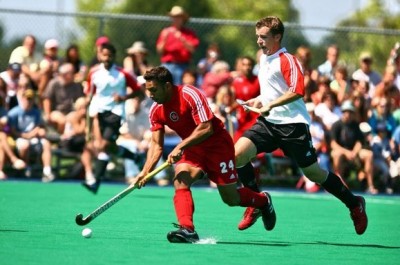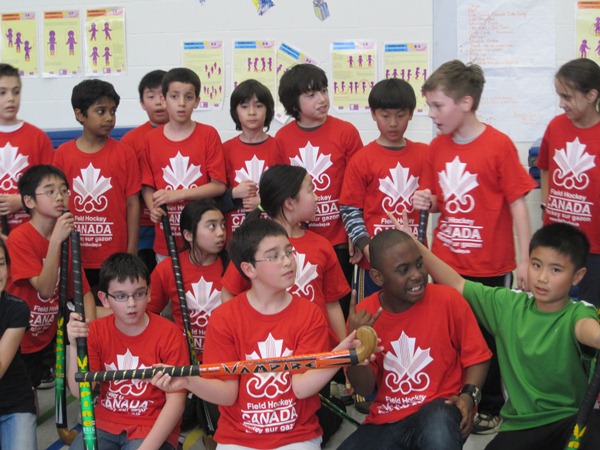
Current Challenges
- Our approach to developing field hockey players is not consistent across the country, and at times it even contravenes the mental, emotional, and physical needs of players.
- Basic movement and sports skills are not emphasized during childhood.
- Fun is not always included in the training environment.
- Programs place multiple demands on players.
- Major differences in talent identification process at all levels across the country (e.g. what age do we start?).
- Recreational programs are inconsistent in quality.
- Not all Provinces provide playing opportunities for recreational and elite play.
- Programs for players with disabilities and all ages are not consistently offered.
- Contact time between player and coach is often too brief (short playing seasons).
- Decision-making training is not emphasized.
- Clubs and provincial associations do not always coordinate programs; consequently athletes can be on one program ten or more months a year.
- Knowledge of training is inconsistent (windows of trainability are not understood).
- Process and criteria for identifying elite players is not nationally defined.
- Limited age groups and regions have access to Provincial and regional camps.
- Male training programs are superimposed on females.
- Differences between male and female athlete development are not addressed.
- Training is delivered according to chronological age, not biological age (maturation level).
- Player access to high-level training facilities is limited (travel and accommodation costs).
- No Canadian National league exists, which is often seen as an impediment to excellence in Canada.
- Connections with elite leagues are not adequately developed or promoted (e.g. NCAA, CIS, City Leagues).
- Elite players have few elite playing options.
LTHD Vision
- A consistent training and competition model that is based on sport science and proven experience.
- Athlete development programs, practices, and decision making are guided by a clear organizational philosophy and pathway.
- Guidelines which define the balance between training and competition at the different stages of development and are implemented in programs at all levels.
- Talent Development Programs are in place at all stages in partnership with all levels of field hockey community.
- Centres of Excellence and Academies identify and train Junior and Future talent.
- Competition structures are fully aligned with the Talent Development Program.
- Nationally identified athletes experience consistent and formalized training both domestic and overseas.
- Structured links (partnerships established) between domestic & international clubs, universities (Canadian & US) and National Team Administration.
- Grassroots participation is increased through quality programs that involve children, schools, clubs, leagues, and players with disabilities.
- Target skills are defined for each age and stage of development.
- Programs are athlete-centred.
- Measures for injury prevention are understood by coaches and players.
- Injuries to players are significantly reduced. Particularly over-use injuries, sport hernia, and knee damage.
- Medical experts (doctors, physiotherapists, sport psychologists) are retained to support the athletes and coaches.
- Centres of Excellence and high performance structure provides training, education, competition, and advice to Developing High Performance players prior to and during the early stages of their international careers.
- Models of best practice are established for the identification and representation of talented players, and they are implemented in partnership with relevant organizations.
- “Second chance” player identification process is established (tracking system).
- Athletes are advised and monitored in career development and education.
- Competitiveness and standing in world rankings are improved (e.g. women and men in Top 8).
- Canadian, European, and World trends are constantly monitored within field hockey in particular and within sport in general.
- Athlete recruitment policies are extended on a global basis, promoting a desire to play for Canada.
- Universities and Colleges are active partners in athlete research and facility access.
- Universities and colleges recognize their role in “Hockey for Life” stage.
- Players are retained from adolescence through to the adult game.
- Retired players remain involved in field hockey as players, coaches, administrators, and umpires.
- Partnerships are established with top clubs in Canada.
Implementation Plan
- Establish quality field hockey programs where players are matched to their age and stage of development.
- Stipulate no game competition before the age of 6.
- Encourage parents to play with their children at home.
- Educate parents, coaches, and administrators in LTHD principles.
- Establish an accepted high performance development plan between all stakeholders (i.e. clubs, high schools, provincial and national association).
- Establish a structured player identification system and a follow-up tracking system at all levels (i.e. clubs, universities, provinces, national).
- Define technical and tactical terminology and standards to the provinces.
- Create an emerging talent program that links with all levels of the game – in particular with junior & senior clubs, universities, provinces and National Team.
- Align the current Domestic Championship structure for age group and seniors with LTHD values
- Establish Centres of Excellence (COEs).
- Increase National Squad training opportunities at the COEs.
- Led by FHC, create partnerships with International Clubs so that a few players can train overseas. This number should be limited per year.
- Identify talented Canadian players living in other countries and integrate them into our programs.
- Establish a system where NCAA & CIS players feed into the National Squad training and competition schedules.
- Create guidelines to assess player training volume and modify appropriately.
- Establish periodized training, competition, and recovery for national team players.
- Ensure a good liaison with the “significant others” in the players environment (Parents, club, coach).
- Increase feedback to players or parents/guardians – “town Hall” meetings.


